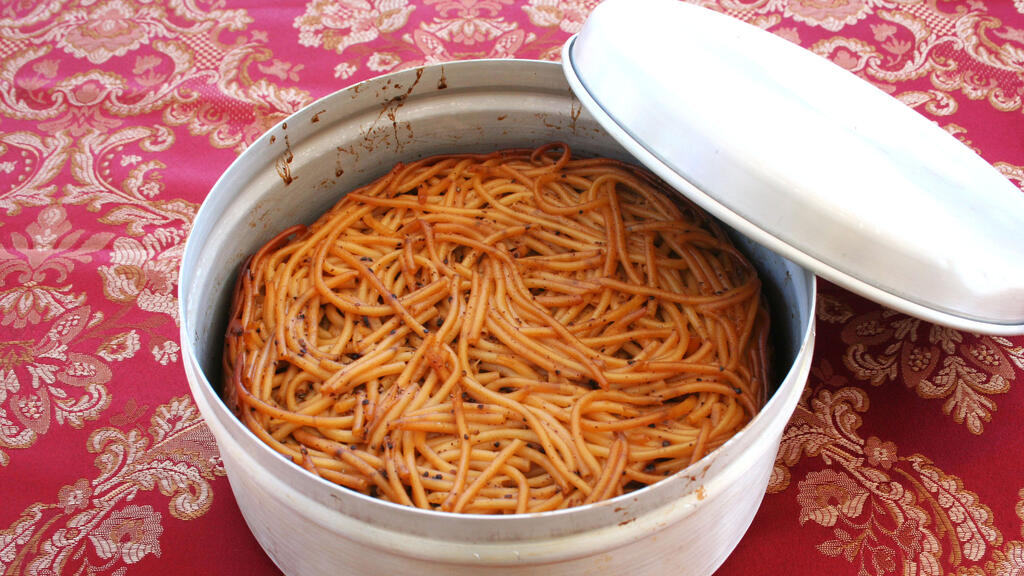
[ad_1]
Yerushalmi kugel reached second place on the record of the 100 worst foods in the world, ranked by the worldwide meals web site Tasteatlas. The rating is predicated on viewers votes.
A second Jewish dish seems on the unflattering record at quantity 51: haroset.
The explanatory notes on the web site for Yerushalmi kugel determine it as a “savory casserole made with thin cooked noodles that are coated in caramelized sugar. After it is mixed with eggs, olive oil, pepper, and salt, the combination is placed in a pan and then baked until firm. The dish first appeared in the 18th century, when European Jews brought culinary traditions of preparing similar baked casseroles.
“As the title suggests, the dish originated in Jerusalem (Yerushaláyim), the place it’s nonetheless in style and out there at bakeries and avenue markets. It can be a staple dish served on Shabbat and different Jewish holidays. Yerushalmi kugel might be baked in spherical or rectangular pans.”
1 View gallery


Yerushalmi kugel was ranked number 2 on the list of the 100 worst foods in the world
(Photo: Osnat Laster)
Haroset is classified in the category dips and spreads. According to the website, it is “historically eaten in remembrance of the enslaved Jews in historic Egypt as one of the symbolic foods on the Passover Seder Plate.” The site also says that “the fruit and nut paste generally known as charoset is used both as a relish for dipping or as an expansion to be eaten with Jewish unleavened flatbread referred to as matzah.”
It acknowledges that recipes for charoset “fluctuate relying on totally different Jewish subgroups, ranging each in kind and the indicated quantity of elements.”
The 100 Worst Rated Foods in the World list is topped by Hákarl, which is Iceland’s national delicacy made from cured shark flesh.
According to Tasteatlas, “The meat is first fermented for as much as three months, then hung and left to dry for one more 4 to 5 months. There are two varieties of the dish: the chewy, reddish glerhákarl, and tender, white skyrhákarl. It is usually thought of to be meals for the courageous, as a result of the excessive ammonia content material typically makes folks gag.”
Other dishes on the list include fried spider; devilled kidneys; Smalahove (sheep’s head); chocolate-covered bacon; Stegte sild (fried pickled herring); Hormiga culona ( fat-bottomed ant); Marmite spread; jellied eels; Blodpudding (made with animal blood); Balut (fertilized duck egg); and frog eye salad.
Some 265,170 people voted on the rankings as of December 1. And don’t forget the site’s disclaimer: “TasteAtlas Rankings shouldn’t be seen as the ultimate international conclusion about meals. Their function is to advertise glorious native foods, instill pleasure in conventional dishes, and arouse curiosity about dishes you haven’t tried.”
(*100*)
Source hyperlink